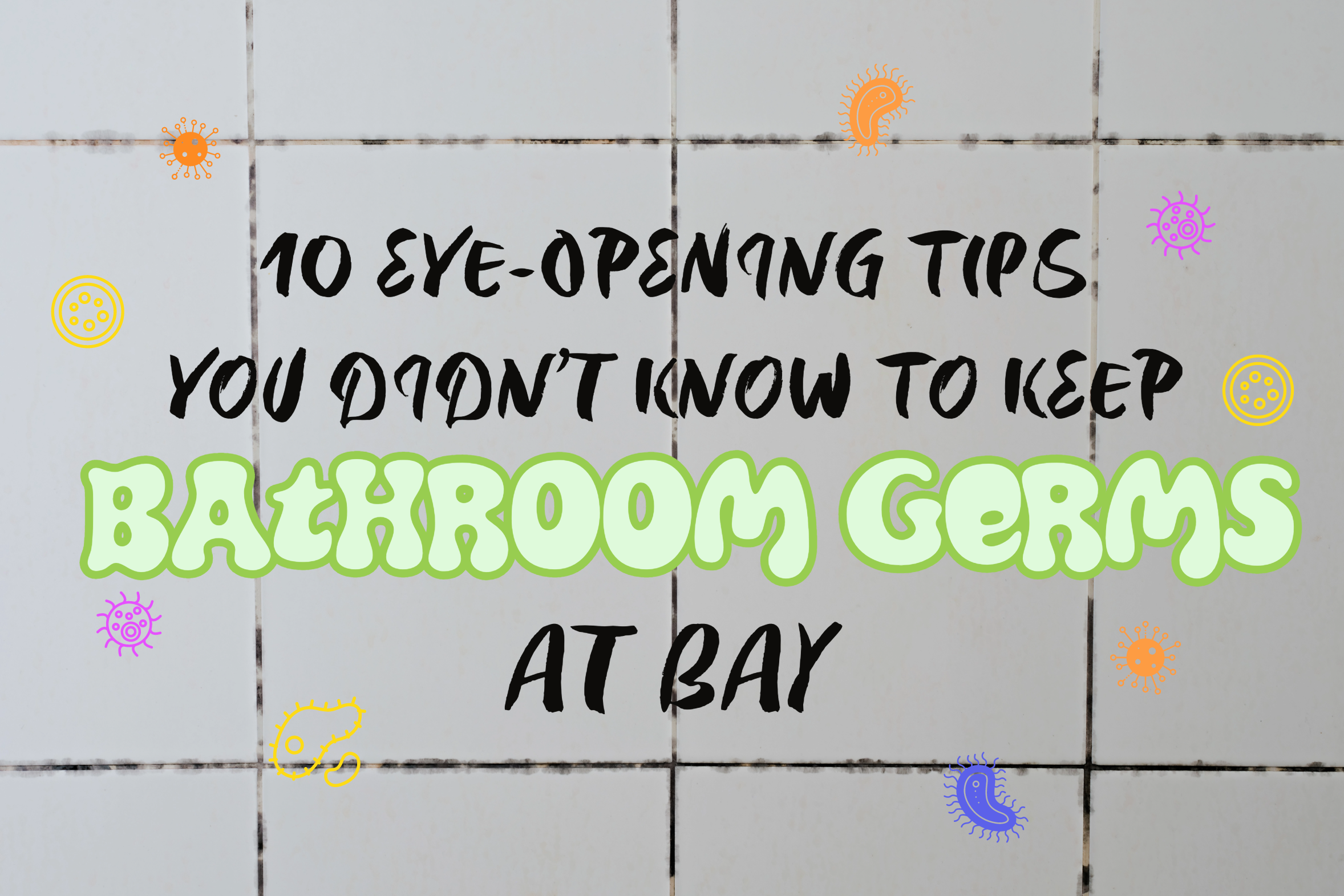Bathrooms are often considered one of the dirtiest places in a home because they are frequently used and exposed to moisture. This creates an environment where bacteria and germs can thrive and spread if not properly cared for. But by following these simple sanitary habits and hygiene practices from your Cincinnati Plumbing & Drain professionals, you can easily keep bathroom germs at bay and maintain a clean and hygienic space.
The Germiest Spots in Your Bathroom:
Before we get into some tips, it’s good to know the areas in your bathroom that are most prone to germs. These areas include:
- The toilet seat and handle
- The sink faucet and handles
- Shower curtains and bath mats
- Towels and washcloths
- Countertops and surfaces, especially around sinks
Being aware of these hotspots can assist you in focusing your cleaning efforts and minimizing the spread of germs.
Types of Bacteria in Bathrooms:
Bathrooms can contain different types of bacteria, some of which can be harmful. The most commonly found bacteria in bathrooms include:
- E. coli
- Staphylococcus
- Salmonella
- Influenza virus
- Norovirus
10 Eye-opening Tips to Keep Bathroom Germs at Bay:
Now that we know more about the germs in our bathrooms let’s discover ten useful tips to keep them away.
- Wash Your Hands – It’s important to mention that washing your hands with soap and warm water is one of the most effective ways to prevent the spread of germs. So, remember to scrub for at least 20 seconds before rinsing off, as recommended by the CDC.
- Clean Your Bathroom – Cleaning the bathroom regularly is a well-known necessity, but it can be challenging to stay on top of it. To maintain a clean and germ-free environment, try setting aside dedicated days in your weekly schedule for cleaning. Additionally, keep antibacterial wipes in your bathroom for quick and easy disinfecting. This simple practice will help prevent the spread of germs and bacteria, ensuring a clean space until your next scheduled cleaning.
- Cover Toothbrushes – Toothbrushes can harbor bacteria, including potentially harmful microorganisms, because they are located in the bathroom. Factors like proximity to the toilet, aerosolized particles during flushing, and contact with hands can contribute to bacterial contamination. However, the amount and types of bacteria on a toothbrush can vary greatly. The best option is to store your toothbrush in a holder that covers the bristles, preventing any airborne bacteria from landing on them.
- Close the Lid Before Flushing – As mentioned before, flushing the toilet with the lid open can spread bacteria and germs all over the bathroom. So, if you’re not already, it’s time to make it a habit to flush the toilet with the lid closed every time.
- Get a Touchless Faucet – To prevent the spread of germs in your bathroom, consider using hands-free fixtures like motion-sensor faucets and soap dispensers. These fixtures eliminate the need to touch potentially germ-ridden surfaces and can greatly reduce the risk of cross-contamination.
- Disinfect Your Toilet Brush – The toilet brush is often overlooked when it comes to cleaning and disinfecting the bathroom. It naturally harbors a lot of bacteria due to its purpose. One good option is to use toilet brushes with disposable ends that can be thrown away after use. If that’s not possible, be sure to clean the brush after each use. To clean your toilet brush, follow these steps: 1. Hold the toilet brush with the bristle end over the toilet. 2. Pour hot water and bleach over the bristle. 3. Prop the toilet brush handle between the toilet bowl and the seat lid to keep it elevated. 4. Allow the brush to air dry for at least five minutes before placing it back in the holder.
- Change Your Shower Curtain – Your shower curtain can accumulate bacteria and mold because of exposure to moisture. To prevent this, change your shower curtain every few months or opt for a washable fabric liner instead of a plastic one.
- Install a Bidet – A bidet is a great alternative to toilet paper as it is more sanitary and reduces the risk of spreading germs through hand contact. They can be easily obtained online or at any local home improvement store. And as a bonus, they are not too hard to install.
- Ventilate the Bathroom – Having proper ventilation is crucial for preventing the growth and spread of germs in your bathroom. If you don’t have an exhaust fan, you can keep a window open while showering or bathing or use a dehumidifier to reduce moisture in the air. Remember, bacteria thrive in moist environments, so it’s important to take these measures.
- Have Your Drains Professionally Cleaned – Household drains can become a breeding ground for bacteria due to the buildup of organic matter, soap scum, and debris. The amount and types of bacteria present in drains can vary based on factors like the drain type, cleaning frequency, and overall home hygiene. To prevent bacteria and mold buildup, it’s recommended to have drains professionally cleaned every 1-2 years. This not only helps prevent clogs and unwanted buildup but also ensures your plumbing system stays in great condition for longer. Give us a call for more information!
By following these ten steps, you can effectively keep germs away and maintain a clean and hygienic bathroom for you and your family. Remember, good bathroom hygiene is crucial for your health, the cleanliness of your home, and even the proper functioning of your plumbing system.
Call Cincinnati Plumbing & Drain at (513) 463 – 6947 or schedule an appointment online now by clicking here!






